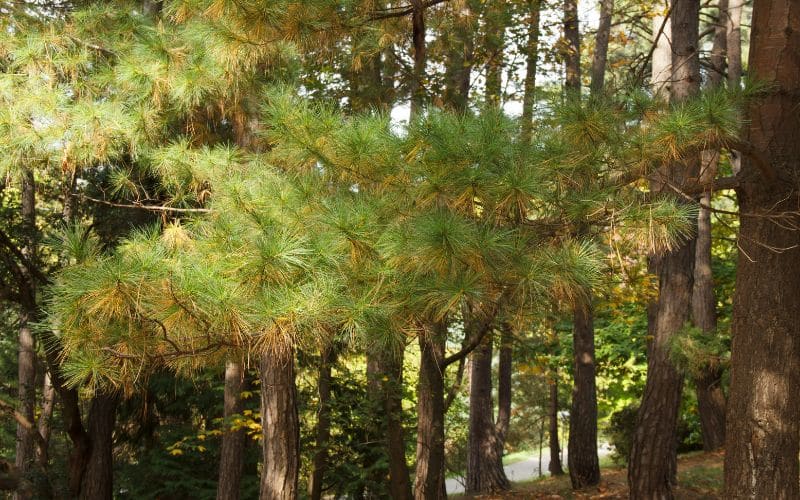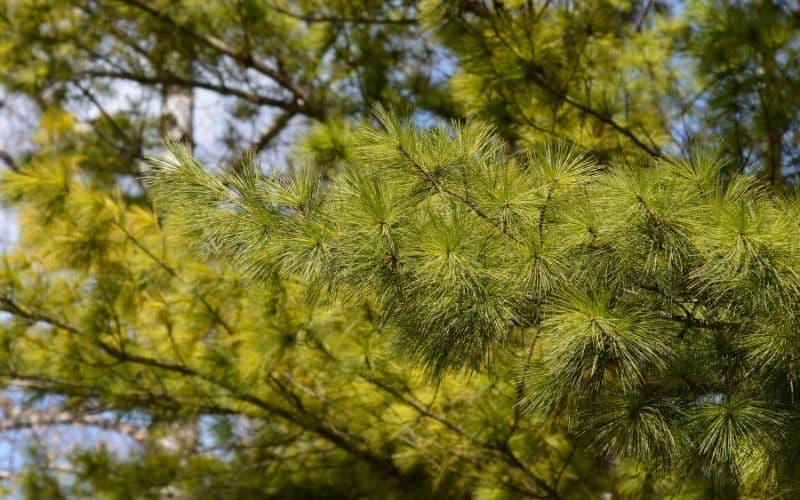
Why is the Eastern White Pine So Special in Ontario?
Meet the Eastern White Pine, a tree that’s not just a staple in Ontario’s verdant forests but a living emblem of the province’s identity. This majestic pine serves as a guardian of the land, a haven for wildlife, and a resource for the people. So, what elevates this particular pine from being just another tree to a cherished provincial icon? Let’s unravel the story that makes the Eastern White Pine an irreplaceable part of Ontario’s natural and cultural tapestry.
The Botanical Basics of Pinus Strobus
First things first, let’s talk science. The Eastern White Pine, or Pinus Strobus if you’re feeling fancy, is a marvel of nature. Its needles come in bundles of five, each needle measuring between 6 to 12 centimeters. The bark is a dark gray-brown, textured with broad ridges that can be up to 5 centimeters thick.
Where Can You Find Eastern White Pine in Ontario?
The Eastern White Pine is a versatile tree that thrives in various parts of Ontario. From the sandy soils of the southern regions to the rocky terrains near the Manitoba border, this pine is a resilient grower. You’ll often find it in mixed forests, standing tall alongside other native species. It’s not just secluded to remote areas; many provincial parks, such as Algonquin and Bruce Peninsula, feature these pines as part of their diverse ecosystems. So whether you’re canoeing in a northern lake or hiking trails closer to urban centers, the Eastern White Pine is a constant companion in your Ontario outdoor adventures.
What Makes Eastern White Pine the Provincial Tree?
The Eastern White Pine is more than just a tree; it’s a piece of Ontario’s history and identity. Designated as the provincial tree in 1984, it has roots that go far deeper. In the colonial era, the British Royal Navy sought its tall, straight masts for shipbuilding, marking the tree’s first commercial use. But its significance doesn’t stop at historical utility. Today, the Eastern White Pine symbolizes the province’s commitment to conservation and sustainable forestry. It’s a living reminder of Ontario’s rich natural heritage, a heritage that includes not just the land but also the people who have lived off it for generations.

How Does the Eastern White Pine Benefit Ontario’s Ecosystem?
The Eastern White Pine is a linchpin in Ontario’s ecological web. Its cones drop seeds that serve as a vital food source for a variety of wildlife, including black-capped chickadees, squirrels, and even some small mammal species. But it’s not just about food; the tree’s towering presence and dense crown offer shelter and nesting spaces for birds, making it a natural sanctuary. Its roots help prevent soil erosion, and its needles enrich the soil as they decompose, making it a true cornerstone species that supports the health and diversity of Ontario’s forests.
The Historical Significance of Pinus Strobus in Ontario
The Eastern White Pine is a tree steeped in history and cultural significance. In colonial times, its tall, straight masts were a prized commodity, essential for the construction of ships for the British Royal Navy. This early commercial exploitation marked the beginning of the tree’s long-standing relationship with the people of Ontario. Fast forward to today, and the wood of the Eastern White Pine is still highly valued. It’s used in a myriad of commercial applications, from crafting beautiful interior finishes to creating intricate woodworking projects. Its enduring utility and cultural importance make it a living testament to Ontario’s rich heritage.
Is Eastern White Pine Good for Timber?
You bet! The Eastern White Pine is a timber superstar in Ontario. Its wood is not only robust but also remarkably workable, thanks to its fine grain and even texture. This makes it a go-to choice for a wide range of applications. From furniture and cabinetry to flooring and moldings, this pine’s wood is as versatile as it is durable. But it’s not just about strength; the wood also takes well to staining and finishing, allowing for a beautiful end product. Whether you’re into carving, joinery, or even boat building, the Eastern White Pine has got you covered.
What Wildlife Call the Eastern White Pine Home?
The Eastern White Pine is like a bustling apartment complex for Ontario’s wildlife. Its dense crown and sturdy branches provide excellent cover for a variety of birds, including pine warblers and chickadees. But it’s not just for the birds; small mammals like squirrels and chipmunks also find refuge in its lofty heights. Even insects, such as bark beetles, make their homes in the crevices of the tree’s bark. The pine’s cones drop seeds that serve as a nutritious snack, making it a one-stop-shop for both shelter and sustenance. It’s a living ecosystem in itself, contributing to the biodiversity of Ontario’s forests.

How to Identify an Eastern White Pine?
So you’re strolling through a park and you spot a towering pine tree. How can you be sure it’s an Eastern White Pine? First, take a look at the needles. They’re unique in that they come in bundles of five, a characteristic feature of this species. Each needle can measure anywhere from 6 to 12 centimeters in length. Next, examine the bark. The Eastern White Pine has dark gray-brown bark with broad ridges that can be up to 5 centimeters thick. These identifying features make it relatively easy to spot this provincial tree, even for the casual observer.
Conservation Efforts: How is Ontario Protecting its Eastern White Pines?
Ontario is deeply committed to the conservation of its Eastern White Pines. The province has implemented various strategies to ensure the tree’s longevity, from strict logging regulations to reforestation efforts. Several parks and reserves are specifically dedicated to preserving this species. These protected areas not only serve as a sanctuary for the Eastern White Pine but also act as educational hubs where people can learn about the importance of this tree and its role in the ecosystem. Research initiatives are also underway to study the tree’s health, its resistance to diseases, and its adaptability to changing environmental conditions. All these measures aim to ensure that the Eastern White Pine continues to be a majestic presence in Ontario’s forests for generations to come.
Conclusion: The Lasting Legacy of Pinus Strobus in Ontario
The Eastern White Pine is more than just a tree; it’s a symbol of Ontario’s natural beauty and ecological diversity. From its historical use as ship masts to its current role in the province’s forests, this pine continues to be a vital part of Ontario’s landscape. So the next time you see a seedling or a towering Eastern White Pine, take a moment to appreciate this arboreal icon of the province.








